Architecture / Berlin
Social convention
Unused since 2014, the International Congress Centre is an architectural behemoth that deserves to buzz with the polyglot chatter of global trade and industry gatherings as it did in its 1980s heyday. We explore the site and consider its future prospects.

ICC’s main southern entrance
When the International Congress Centre (icc) opened in West Berlin in 1979 it was one of the largest and most hi-tech conference venues in the world. Designed by architects Rolf Schüler and Ursulina Schüler-Witte, the spaceship-like building was more than 300 metres long and housed more than 80 rooms, a vast foyer, central bar, restaurant and lounge with views over the city. In the icc’s 1980s and 1990s heyday it played host to events as big as the annual meeting of the World Bank and the imf, and as avant garde as a concert by musician Laurie Anderson. Across the icc’s two main auditoria, up to 9,000 delegates could watch keynote presentations on comfy chairs equipped with reading lamps and plugs for headsets with channels for simultaneous translations in up to eight languages. After a long day, the seating in the stalls could be pivoted to reveal a party-ready, timber-floored ballroom underneath.
Yet the icc, which is connected via footbridge to the city’s main Messe Berlin fairgrounds, has been standing empty for eight years. The building’s slow decline started after the German capital’s reunification in 1990, when it was no longer needed to show off the technical prowess of West Berlin. With structural issues piling up, its doors closed for good in 2014. For a much-needed renovation to go ahead, local politicians will need to determine how the extraordinary space, which can accommodate up to 20,000 visitors on any given day, should be filled in the future.
“There is a whole generation of people who have never entered the building and don’t appreciate it from the outside,” says Thomas Oberender, the director of storied cultural institution Berliner Festspiele, which celebrated its 70th anniversary in October with a special event, The Sun Machine Is Coming Down, at the icc. “My intention was to open it to the city again,” he adds. It was the first time the public could enter the icc in almost a decade, and for 10 days, the blockbuster show brought in 26,000 visitors. There were film screenings and concerts in the two large halls, circus performances staged in the rear lounge, and site-specific artworks dotted along the promenades – but many came just to gawk at the interiors.
“There is a whole generation of people who have never entered the building”
Stepping inside the icc’s sprawling entrance foyer can give the impression of entering another era altogether. From the large moveable stage partitions and crisscrossing escalators to details such as the machine-like information points and coloured neon signage, the convention centre’s futuristic original interiors have been preserved remarkably well. Yet the building’s most innovative aspect is not the hi-tech auditorium but rather its floor plan. Less than a fifth is fixed for the use of congresses and the rest is open, flexible space. “The architects thought that the most important thing in every congress is not to meet in a locked room but to socialise outside,” says Oliver Elser, curator of the Deutsches Architekturmuseum in Frankfurt and an expert on the icc’s history. “Nobody would pay for this kind of great gesture again.” But parts of the building are in a tired state: the dormant escalators are gathering dust, windows are flecked with dirt and the grey carpets look a decade overdue for a wash.
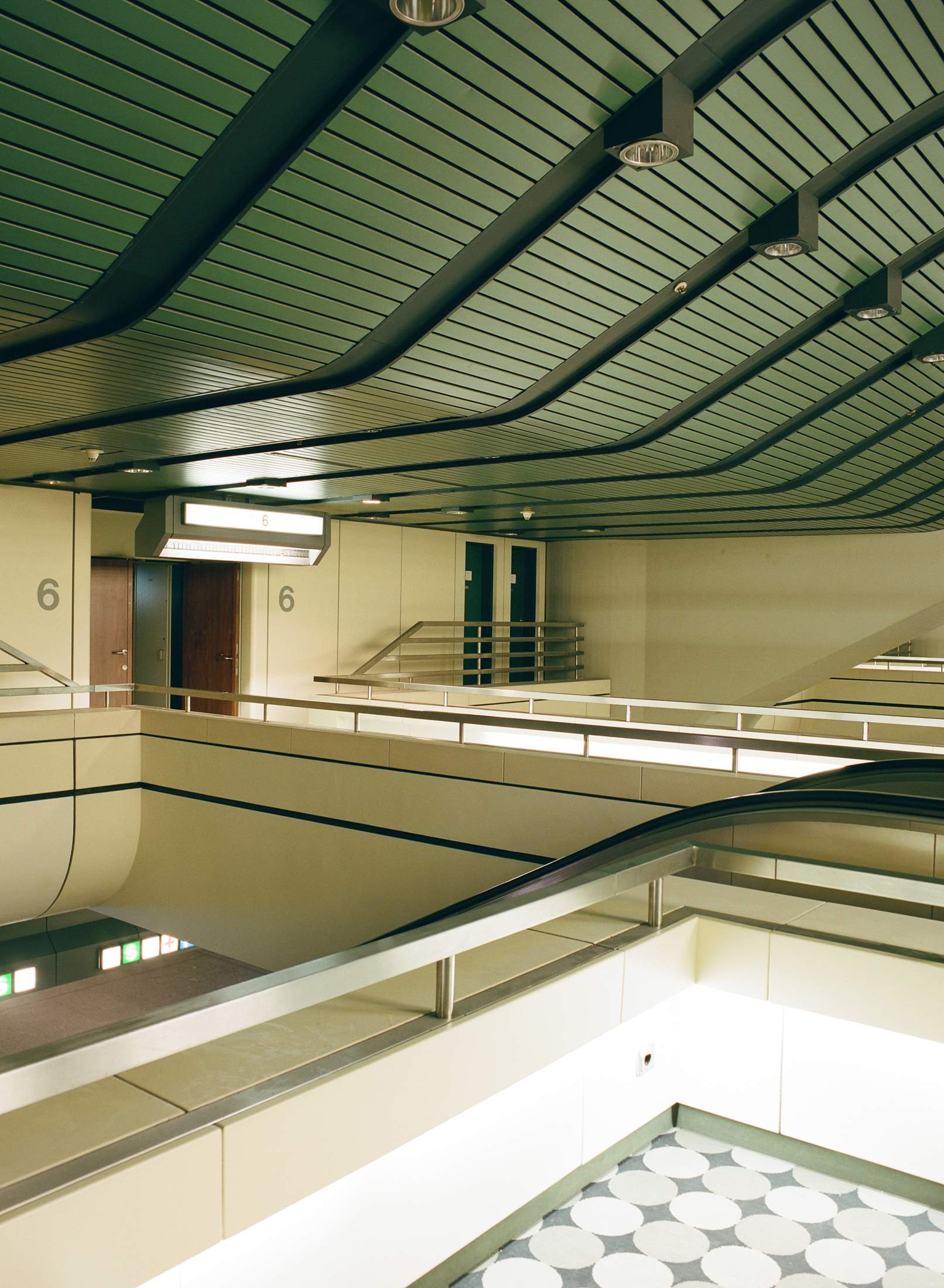
Second-floor open hallways
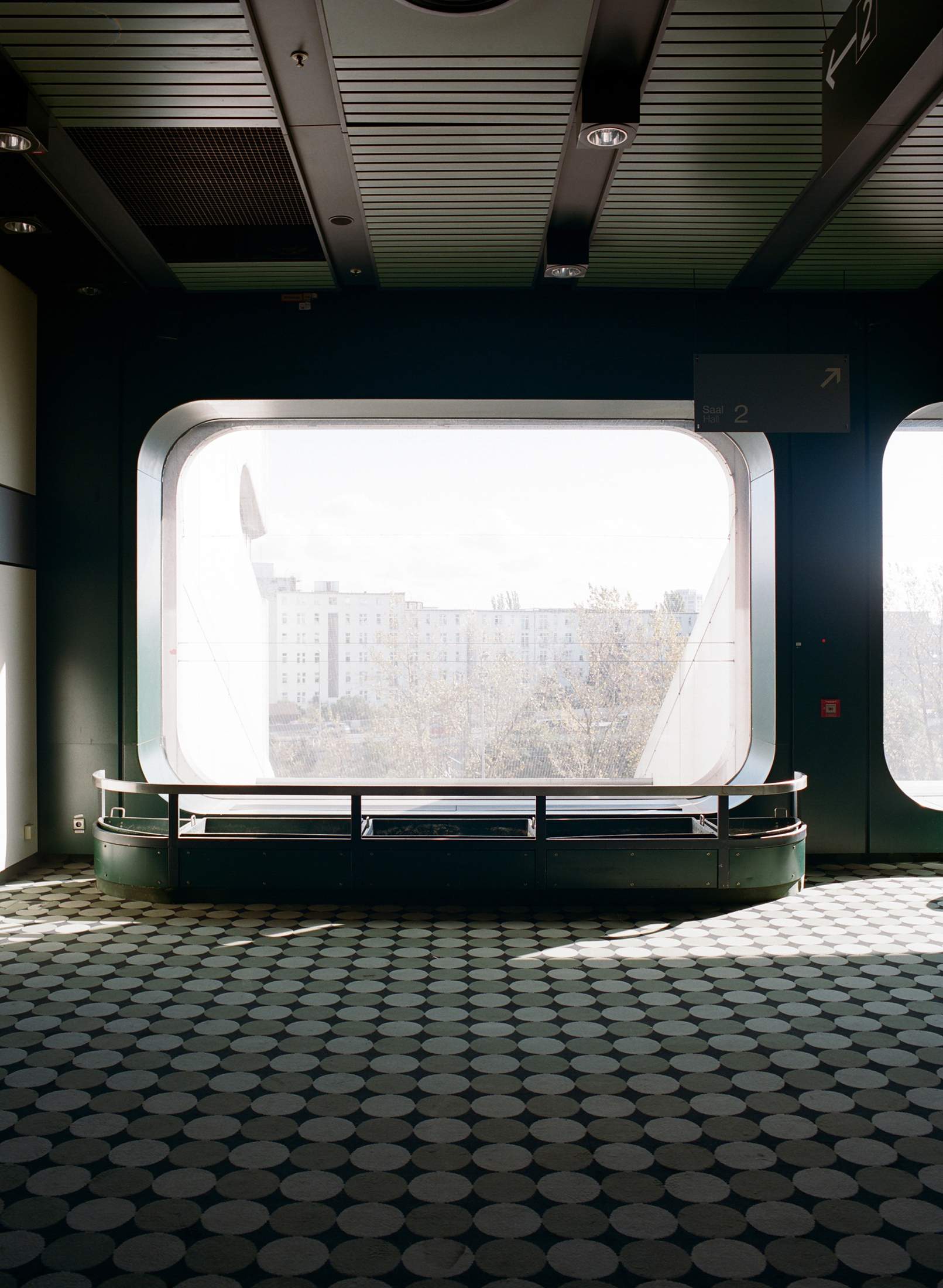
Rounded windows create a cruise-ship feel
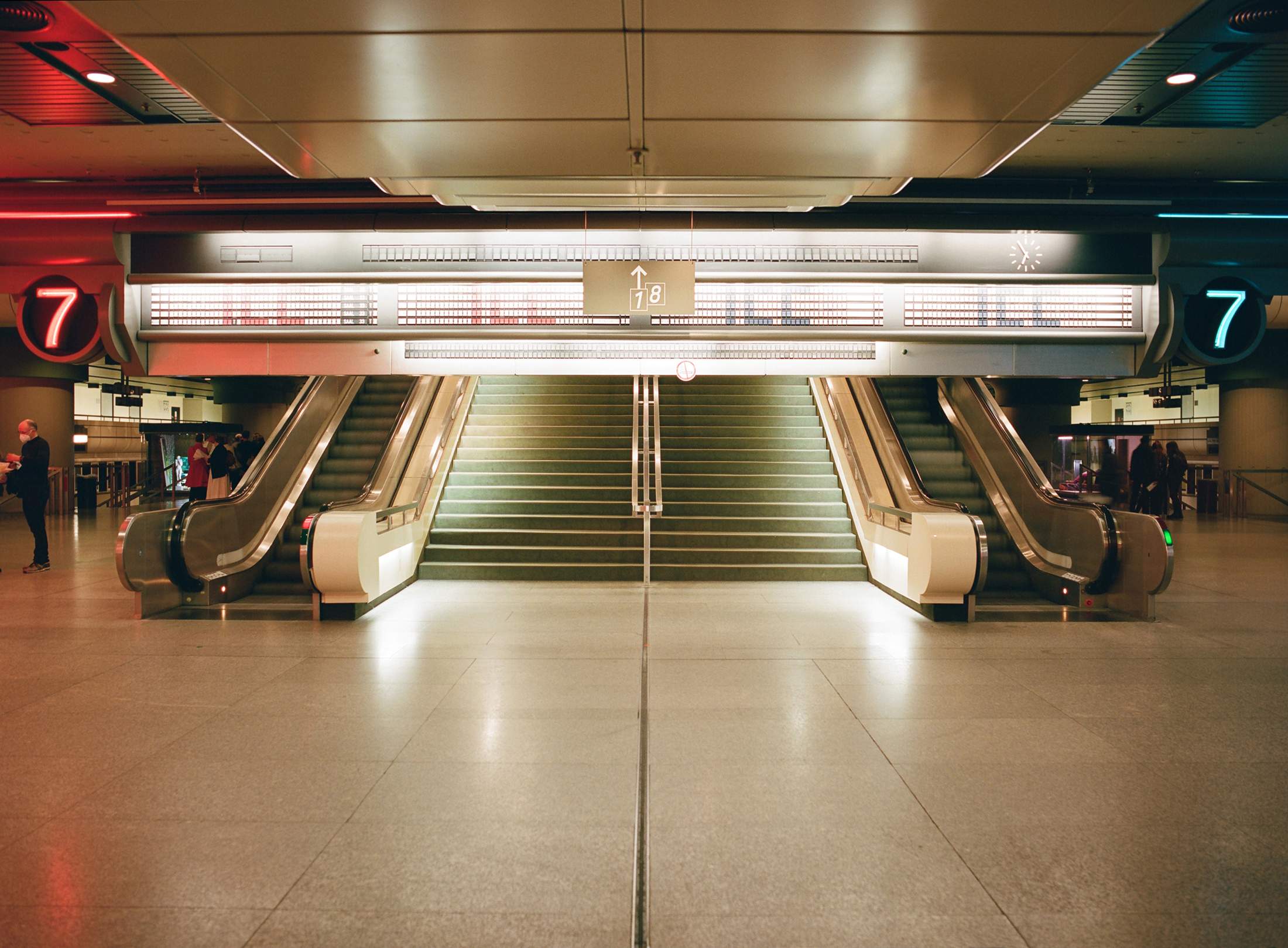
Staircase from the foyer
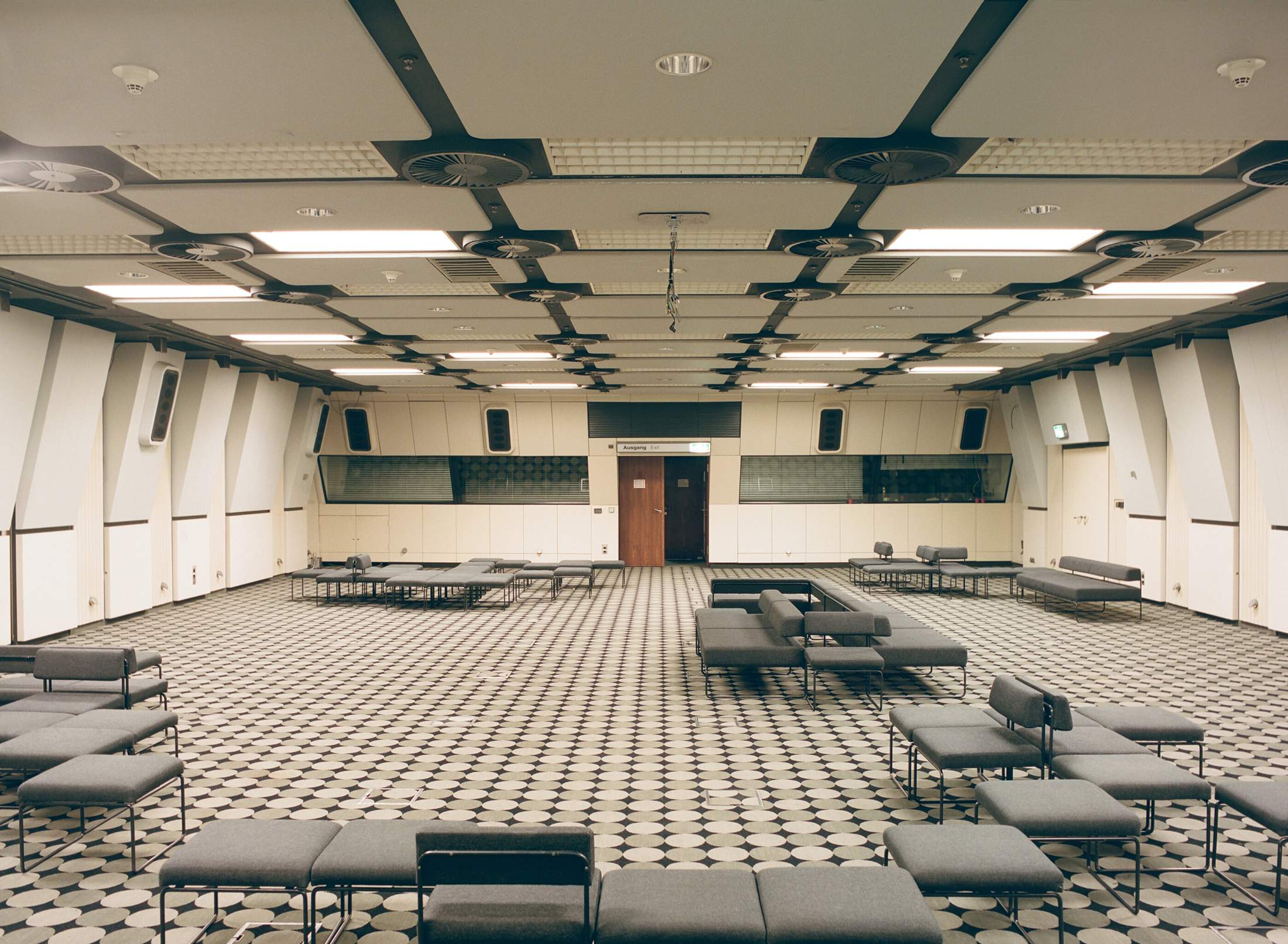
Windowless conference room on the second floor

ICC’s largest hall, the 5,000-seat Saal 1, with custom speakers hanging from the ceiling
Oberender, however, remains optimistic about the icc’s future, noting that his ambitious idea for staging The Sun Machine Is Coming Down was embraced by city officials. “They all loved it immediately,” he says. “The main task at the moment is to develop a scenario, a mission, for how the building could be used.” This is welcome news to Christoph Rauhut, head of the Berlin Heritage Authority. After taking up the post in 2018, he swiftly assigned heritage protection to the icc, which means that it cannot be visibly remodelled without permission. The status has typically been reserved for buildings built more than 50 years ago but under Rauhut the agency has moved to preserve architecture from as late as the 1990s.
“These 20th-century buildings add to the history of Berlin not only in terms of architecture and design but also because they were so important politically,” says Rauhut. However, Rauhut also recognises that it can be a challenge to find suitable new occupants and mentions the decommissioned Tempelhof and Tegel airports in Neukölln and Reinickendorf, respectively, as other examples of large, little-used buildings in the city. “In Berlin, there are many sleeping giants,” he says.
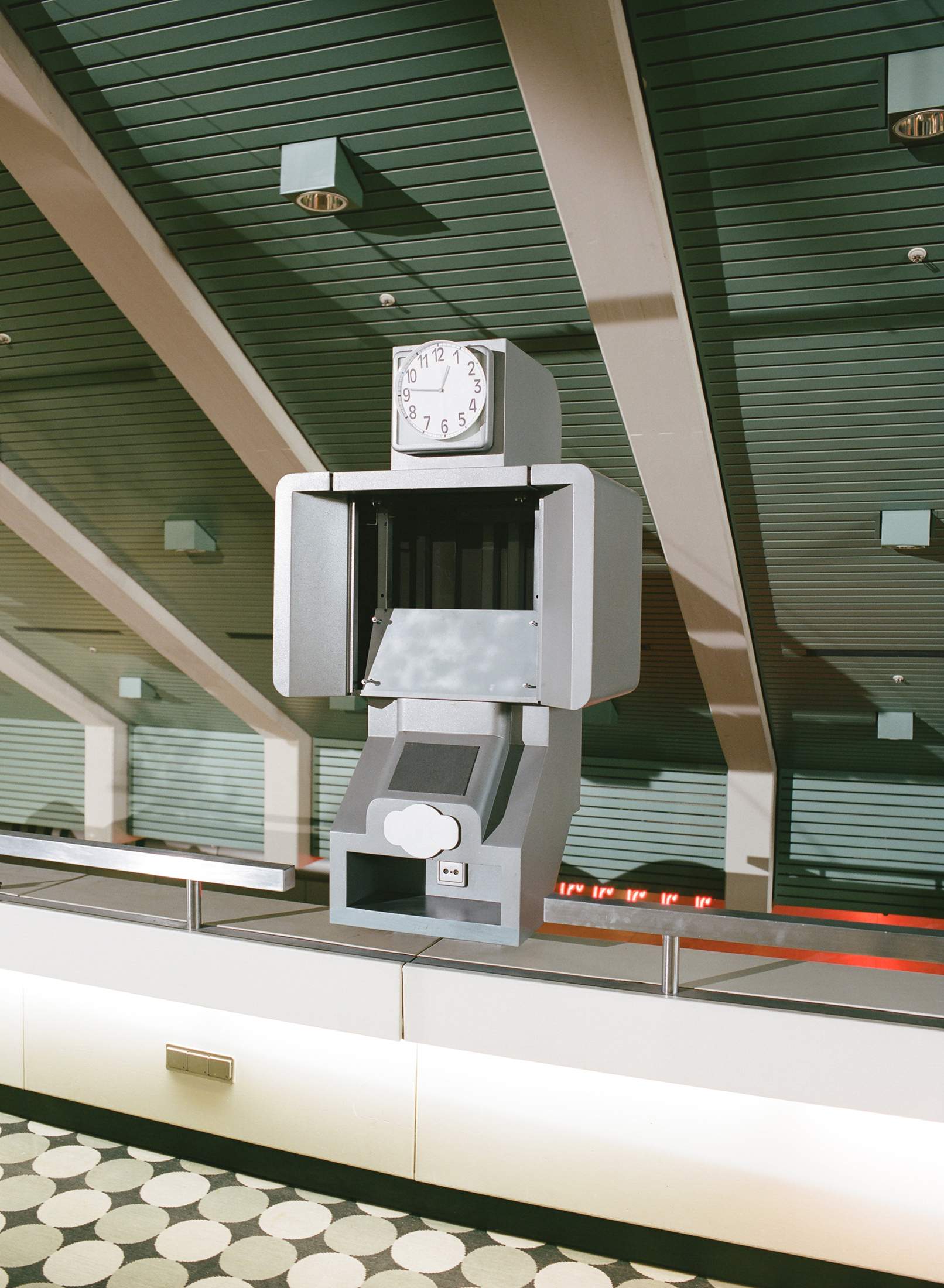
Information point

Neon lights in the foyer
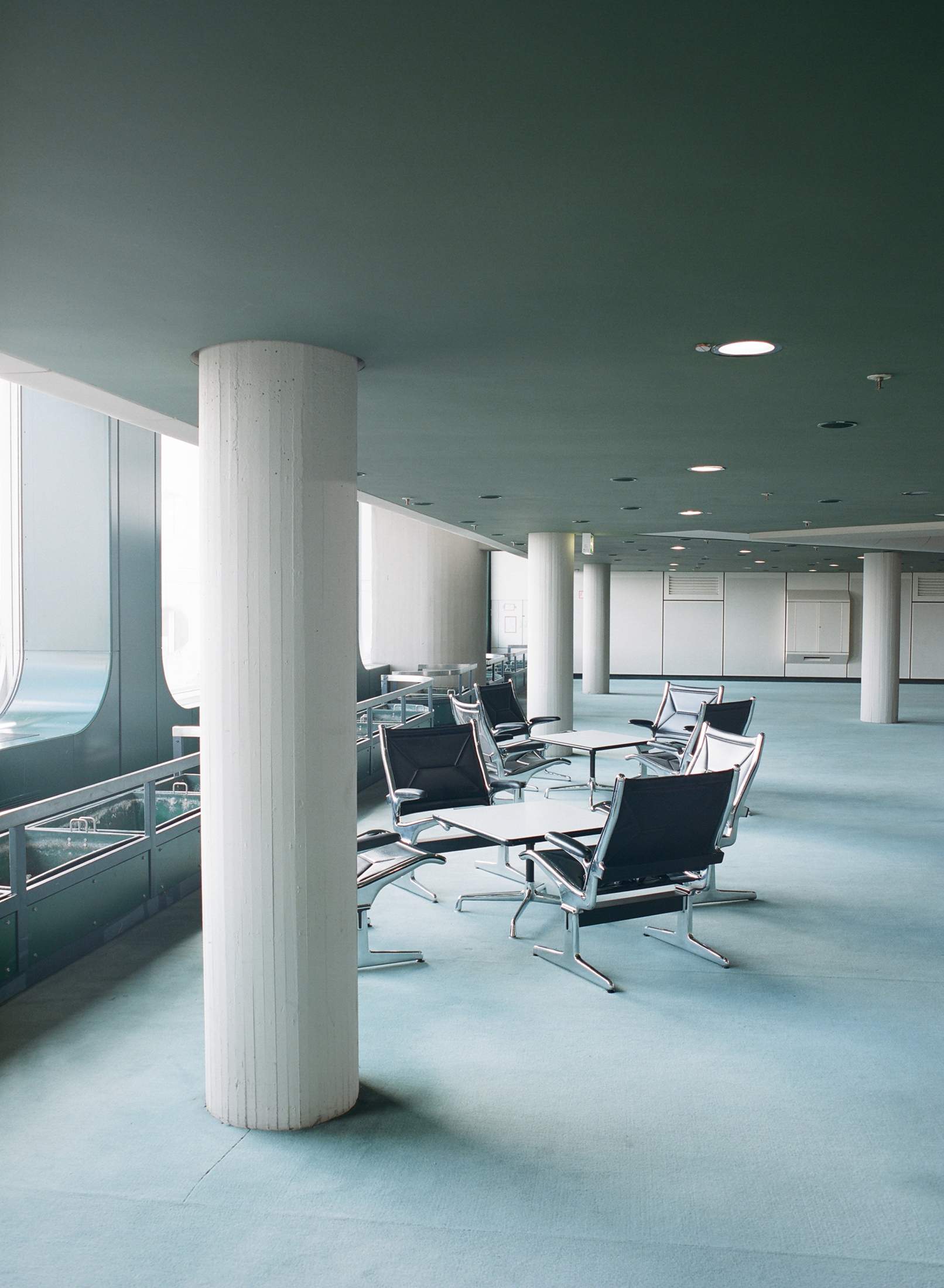
Black leather loungers

Saal 6 on the second floor, which seats 200 delegates
The Sun Machine event offered a glimpse of the icc’s potential as a venue for the creative industries and it is easy to envision the building as a spectacular setting for artists’ studios, performances, fashion shows or the city’s annual film festival. The prospect would not require the icc to forgo its old remit either. One proposal for the building is to use it as both a cultural and convention centre, renaming the building the International Centre for Contemporary Culture (iccc). “The architects actually intended the icc to function about 50 per cent of the time for congresses and the rest for additional events,” says Julia Albani of Berlin-based communications agency Bureau N, which developed the concept for a private investor.
Reopening the icc for conventions would capitalise on a trend that can only be expected to increase in 2022: industry jamborees expanding far beyond today’s typical fairgrounds. As attendees gathered at Milan’s Salone del Mobile in September after a two-year hiatus, the most talked-about event was not at the Rho Fiera fairgrounds but rather Alcova, a show organised in a centuries-old former military hospital. A few days later at the iaa Mobility show in Munich, multiple car-makers chose to showcase their newest models on plazas in the old city centre instead of the vast exhibition spaces of the fair itself. These trade events brought together a far broader audience by venturing outside anonymous exhibition halls and taking over storied locations. If the icc is given a second lease of life, exhibitors in Berlin would only need to cross a footbridge to follow suit.
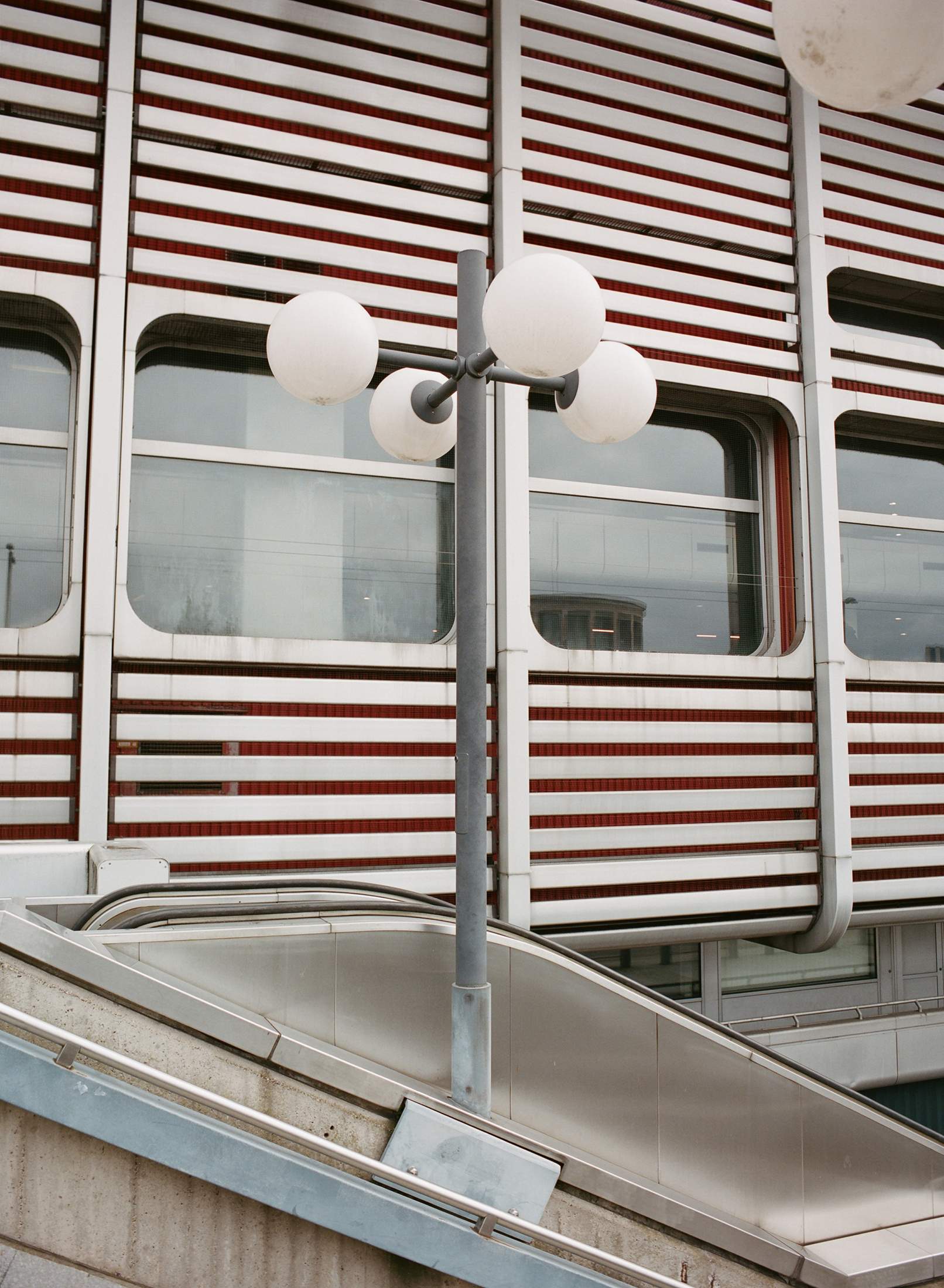
Aluminium cladding
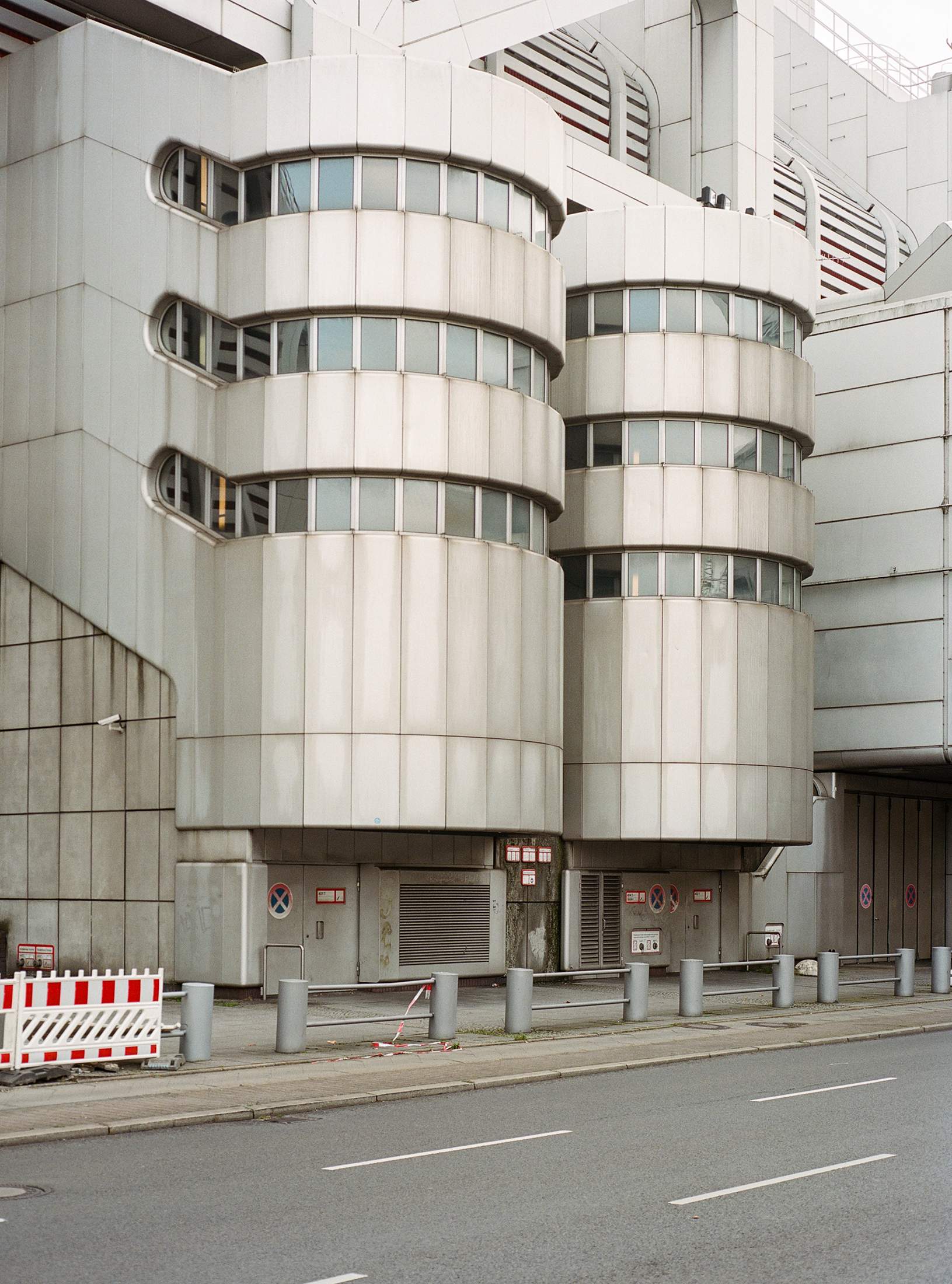
East view of the building
Future of the ICC
The biggest problem with convention centres the world over is that they are largely devoid of design personality and rarely make an architectural statement that reflects their surroundings. It’s a strange phenomenon because in a lot of cases visitors from across the globe travel to these locations and see little else beyond the cold interiors of these venues.
For these places to be successful, they should be more reflective of their cities and programming should be adapted to support this. Serving Heineken at Dutch convention centres or mediocre panini at Milan’s Fiera exhibition facilities is not going to cut it anymore. Whole restaurant concepts should be adopted from a convention centre’s home city to feed hungry delegates.
We will continue to come together for international exhibitions in the years ahead and those planning to build new venues should think about better integration into the urban fabric. Housing, retail and hospitality buildings can work within and around these mega sites, forming a year-round buzz and bringing the city’s culture to people who are there on short business trips.


